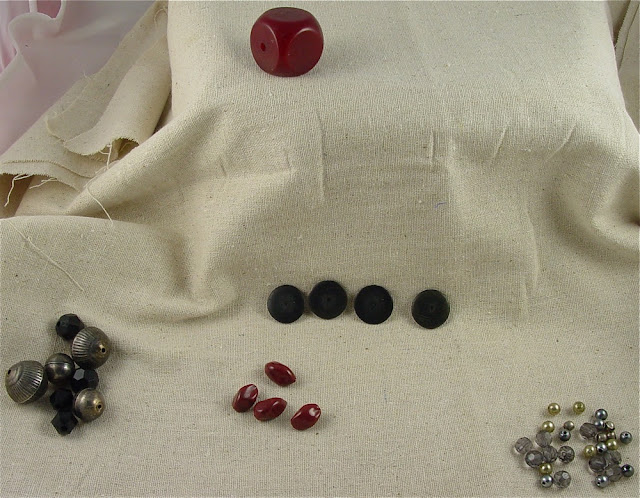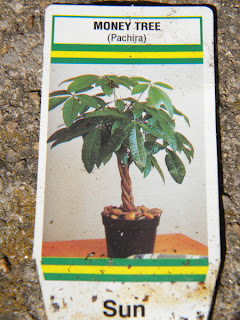Old Beads, New Designs by facingEAST Designs - Guest Post
Today we are honored to have Anna Garner, a very knowledgeable and talented creator who has explored the world, helps us take something old, and make it new. Her interest in the histories of ancient cultures, art, art history, and ancient civilizations brings a unique look and feel to her creations. She is a wealth of information, and we can all learn to appreciate what goes in to making old things into new.
Visit her shop at Crafts of the Past (for ancient artifacts, antiques, and new creations), her facebook page (where she shares stories of her archaeology adventures), and her blog, Facing East Designs (where she often shares how she creates, and explains the histories of stones and beads often used).
Putting it all together yielded this piece, which satisfied my goal of creating a simple one-strand necklace in a Middle Eastern style. I used the antique bakelite bead with more modern silver, glass, ceramic and acrylic beads that kept the somber tone of the burnt sugar bakelite.
I am sure you will find the artifacts and information fascinating.
You will find a new passion for the old,
You will appreciate even more, the old made into new.
Old Beads, New Designs by facingEAST Designs
by Anna Garner
During the last forty years of my life, I have collected beads and ethnic silver jewelry. When I am inspired to create a new design from the loose pieces in my collection, I like to choose an old focal bead or piece of silver and then surround it with beads and silver from the many trays of loose beads of all ages and origins in my collection.
For the purposes of this blog, I chose beads that are easily acquired without traveling as far as I have done in gathering up my stash of beads. I always work from the focal section out to the ends in designing a necklace. This time I chose a challenging shape to fit into a simple one-strand design. That deep caramel bakelite bead from Yemen
Not only is that particular focal a challenge because of its imposing shape and size. Its tone, or what I call its atmosphere, is somber. It does not invite the addition of gaily colored lavender acrylic or bright lemony crystal beads, or at least not to my eyes. So back to my trays of loose beads and broken necklaces dating from the late 1900s and early 21st century in Europe and America
Still, in keeping with my own brand of FacingEAST Designs, I wanted to maintain a traditional Middle Eastern manner of spacing beads along a string.
The traditional Middle Eastern style of stringing beads is a relatively large or long focal bead or silver piece, then beads on either side that spread the V shape of much of West European and American necklaces into a wide U shape at the focal section of the necklace. Then at each side of the focal section the complementary beads climb in a syncopated rhythm. That is, the side beads may be all the same size and shape, but punctuated with larger metal pieces or larger stone or glass beads. Sometimes the side beads are actually graduated as a modern European pearl necklace might be. Even in those cases, you will find the string may be interrupted by contrasting shapes and sizes of beads.
Back to the business of putting the piece together. Bakelite was invented as a resin that could be colored to imitate the various natural fossil resin amber and jet beads of the world. So I strung this focal bakelite bead with the bumper or spacer beads that are used in the Middle East to slow the wearing away of the sides of the bead. I found the round flat black button beads made of the same material as the focal bead, but in black, to serve as the bumpers and separators in this piece.
The antiqued silver washed metal grooved bicone beads from a vintage 1980? broken necklace struck just the right somber note to accompany my choice of focal. They also provided the gravity to prevent the caramel bakelite cube pulling the necklace into a sharp V shape at the bottom. The black glass beads imitating jet had been strung on the same broken necklace with the silver colored metal beads, as were the smaller smooth beads of the same material.
But now I had to find some way of punctuating the climb up the sides of the necklace, and it needed to repeat the color of the focal to satisfy my eyes. From a different tray, I found these modern jasper colored hard ceramic beads, shaped as irregular three-sided bicones, imitating a style from ancient times in Central Asia .
As the ascending beads on each side of the focal section of beads, I chose these pale gray faceted acrylic beads. They came from still another 1980s? era broken string of beads in the office-to-evening style of jewelry. The same broken string of beads provided the gun metal gray coated chain and fastener.
Putting it all together yielded this piece, which satisfied my goal of creating a simple one-strand necklace in a Middle Eastern style. I used the antique bakelite bead with more modern silver, glass, ceramic and acrylic beads that kept the somber tone of the burnt sugar bakelite.
Stop by Anne's online homes:
I am sure you will find the artifacts and information fascinating.
You will find a new passion for the old,
You will appreciate even more, the old made into new.










It matters not that Anna Garner is not a member of Zibbet - what matters is that she is an artist, that she has shared some of her knowledge and techniques - and it all comes together as a fascinating read, Rebecca! Thank you SO much for sharing.
ReplyDeleteGreat guest post! Will visit.
ReplyDeleteHow interesting!!
ReplyDeleteThank you for sharing Anna's creations!!